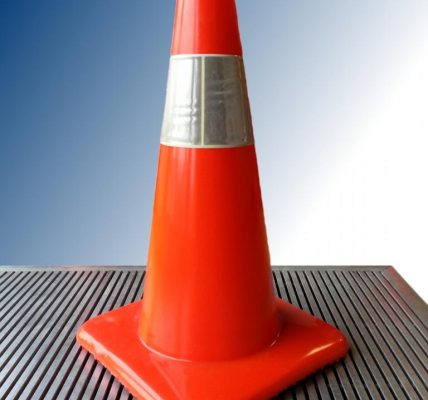I’ve written about the Supreme Court’s Daubert opinion many times before, tagging it with the label “junk science.” The phrase “junk science” never actually appeared in Daubert, but rooting it out has been the animating concern behind the application of Daubert. See, e.g., Amorgianos v. National RR Passenger Corp., 303 F. 3d 256, 267 (2nd Cir., 2002)(“The flexible Daubert inquiry gives the district court the discretion needed to ensure that the courtroom door remains closed to junk science while admitting reliable expert testimony that will assist the trier of fact.”)
In federal courts today, Daubert has become a magical incantation for defense lawyers in product liability lawsuits. Drug companies gleefully get drugs approved by the FDA with the thinnest of scientific evidence—often relying on “surrogate markers” or underpowered clinical trials—and then claim that plaintiffs injured by their drugs cannot present their case to a jury until they have produced vastly more scientific evidence than the company or the FDA would use. Car manufacturers regularly demand plaintiffs conduct testing that the companies themselves never did.
Today we’re going to review the state of the art, as it were, of Daubert in product liability cases by examining the four most recent published Court of Appeals opinions. Those opinions are:
- Adams v. Toyota Motor Corp., No. 15-2507, 2017 WL 2485204 (8th Cir. June 9, 2017)
- In re Zoloft (Sertraline Hydrochloride) Prod. Liab. Litig., 16-2247, 2017 WL 2385279 (3d Cir. June 2, 2017)
- Wendell v. GlaxoSmithKline LLC, No. 14-16321, 2017 WL 2381122 (9th Cir. June 2, 2017)
- Nease v. Ford Motor Co., 848 F.3d 219 (4th Cir. 2017)
Plaintiffs lost Zoloft and Nease, and won Adams and Wendell. But it would be foolish to look at these cases simply as a scorecard: the real issue here for future cases is how the courts decided the cases.
All of these cases have one thing in common: the defendants framed Daubert as a matter of pseudoscientific absolutes, and the Courts of Appeals rejected the defendants at every turn. In the cases that follow, defendants argued that any difference between a test and an accident renders the test unreliable, that plaintiffs cannot go to a jury without statistically significant evidence, that opinions developed in litigation are inherently unreliable, that a doctor’s differential diagnosis is an unacceptable scientific methodology, that plaintiffs’ experts must completely eliminate all potential alternative causes, and that case studies are scientifically irrelevant—and the appellate courts rejected each and every one of those arguments.
Like the Supreme Court intended, Daubert is “flexible” because science itself is flexible. Daubert is a means by which courts ensure that juries aren’t subjected to unsupported speculation; it’s not a grocery list of arbitrary requirements.
Adams v. Toyota (Eighth Circuit)
Adams v. Toyota Motor Corp., No. 15-2507, 2017 WL 2485204 (8th Cir. June 9, 2017) is a product liability case, one of many unintended acceleration cases brought against Toyota. The plaintiff’s expert testified that, at high temperatures, the throttle pulleys would fuse together, and that this thermal-induced sticking defect had caused the accident. Toyota raised two Daubert challenges, arguing that the expert rendered his own test invalid by repositioning the cruise control arm and that the expert’s analysis was insufficient to conclude that same defect had caused the accident.
The Eighth Circuit rejected both arguments, reiterating that “the inquiry envisioned by Rule 702 is … a flexible one,” and that these issues could all be addressed with “[v]igorous cross-examination, presentation of contrary evidence, and careful instruction on the burden of proof.” Id. at *5 quoting Daubert at 549 and 596. Put simply, the expert explained what he did:
Though the parties dispute the significance of Stilson’s repositioning the cruise control arm during his thermal testing, Stilson thoroughly explained how he modified the cruise control system and why he did so. He testified that, in his opinion as an engineer, the modification did not affect the validity of the thermal testing because the cruise control system operated independently of the throttle mechanism that was the subject of his testing. He explained that his testing supported the conclusion that the throttle pulleys fused together when subjected to high temperatures.
Id. at *5. At first blush this seems rather obvious—of course the expert should explain what they did—but an expert’s failure to explain their work is often at the root of a Daubert exclusion, whereas an expert’s explanation is often the key in avoiding exclusion of an expert.
In light of that explanation, the Eighth Circuit had no trouble affirming the District Court, with the usual reminders that the Daubert “gatekeeper” function is about excluding junk science, and isn’t about demanding scientific certainty from experts:
“[T]he district court must … function as a gatekeeper who ‘separates expert opinion evidence based on good grounds from subjective speculation that masquerades as scientific knowledge.’ ” Presley, 553 F.3d at 643 (quoting Glastetter v. Novartis Pharm. Corp., 252 F.3d 986, 989 (8th Cir. 2001)). However, Stilson’s opinion as to causation need not be a “scientific absolute in order to be admissible.” Bonner v. ISP Tech., Inc., 259 F.3d 924, 929 (8th Cir. 2001). We conclude that Stilson’s opinions represented more than “vague theorizing based on general principles,” Pro Serv. Auto., LLC v. Lenan Corp., 469 F.3d 1210, 1216 (8th Cir. 2006), or “unsupported speculation,” Daubert, 509 U.S. at 590, 113 S.Ct. 2786. The district court did not abuse its broad discretion in allowing Stilson’s expert opinion pursuant to Rule 702.
Id. (emphasis added).
The Adams case was also notable for its discussion of “other similar incidents” evidence. The defendants argued that “proponents must show that the other-incidents were caused by the same or similar defect,” essentially forcing plaintiffs into holding a mini-trial over each incident, something that is often not possible. The Eighth Circuit rejected that rule, reiterating again “[t]here are no hard or fast rules as to what degree of similarity there must be to make the evidence admissible.” Id. at *3 (quoting Henwood v. Chaney, 156 F.2d 392, 397 (8th Cir. 1946).
In re Zoloft (Third Circuit)
In re Zoloft (Sertraline Hydrochloride) Prod. Liab. Litig.,, No. 16-2247, 2017 WL 2385279 (3d Cir. June 2, 2017) involved the Zoloft birth defects MDL, in which the trial court excluded the plaintiffs’ epidemiological expert from testifying. I wrote about the District Court’s opinion back when it came out in March 2016, criticizing the District Court’s reliance on “statistical significance” when deciding Daubert. As I noted then, the American Statistical Association agrees that “statistical significance” is more a term of art than an actual scientific principle. The bedrock principles of “p ? 0.05” and “95{c9b670b3c77d807bdd7060c9fc0a99121cc6b184676c9335f3481a95c383dd4c} confidence interval” are hardly “scientific.” Instead, they were pulled out of thin air decades ago by a eugenicist. (More about that in this post.)
Here’s the good news: the Third Circuit refused to establish a “bright-line rule” requiring “statistical significance.” As the Court wrote,
Central to this case is the question of whether statistical significance is necessary to prove causality. We decline to state a bright-line rule. Instead, we reiterate that plaintiffs ultimately must prove a causal connection between Zoloft and birth defects. A causal connection may exist despite the lack of significant findings, due to issues such as random misclassification or insufficient power. Conversely, a causal connection may not exist despite the presence of significant findings. If a causal connection does not actually exist, significant findings can still occur due to, inter alia, inability to control for a confounding effect or detection bias. A standard based on replication of statistically significant findings obscures the essential issue: a causal connection. Given this, the requisite proof necessary to establish causation will vary greatly case by case. This is not to suggest, however, that statistical significance is irrelevant. Despite the problems with treating statistical significance as a magic criterion, it remains an important metric to distinguish between results supporting a true association and those resulting from mere chance. Discussions of statistical significance should thus not understate or overstate its importance.
Id. at *3 (emphasis added). The Third Circuit took great care to explain, “the course of the proceedings make clear that the replication of significant results was not dispositive in establishing whether the testimony of either Dr. Bérard or Dr. Jewell was reliable. In fact, the District Court expressly rejected Pfizer’s argument that the existence of a statistically significant, replicated result is a threshold issue before an expert can conduct the Bradford–Hill analysis.” Id. at *5.
Also more good news: the Third Circuit specifically recognized that a plaintiff can establish causation with a variety of methodologies, including the “weight of the evidence,” the “Bradford Hill criteria,” or a “differential diagnosis.” Id. at *5. These are all “flexible methodologies … [that] can be implemented in multiple ways.” Id. The critical part for Daubert purposes isn’t whether or not an expert applied a general methodology in a particular way, but whether they applied the methodology they chose consistently. As the Third Circuit described its prior opinion, In re Paoli R.R. Yard PCB Litigation, “[w]hile we did not require the expert to run specific tests or ascertain full information in order for the differential diagnosis to be reliable, we did require him to explain why his conclusion remained reliable in the face of alternate causes.”
The Third Circuit laid down a common sense, clear roadmap for plaintiffs to follow:
In short, despite the fact that both the Bradford Hill and the weight of the evidence analyses are generally reliable, the “techniques” used to implement the analysis must be 1) reliable and 2) reliably applied. In discussing the conclusions produced by such techniques in light of the Bradford Hill criteria, an expert must explain 1) how conclusions are drawn for each Bradford Hill criterion and 2) how the criteria are weighed relative to one another. Here, we accept that the Bradford Hill and weight of the evidence analyses are generally reliable. We also assume that the “techniques” used to implement the analysis (here, meta-analysis, trend analysis, and reanalysis) are themselves reliable.
Id. at *6.
Here’s the bad news: the expert hadn’t followed that roadmap. He “did not 1) reliably apply the ‘techniques’ to the body of evidence or 2) adequately explain how this analysis supports specified Bradford Hill criteria.” Id.
Wendell v. GlaxoSmithKline (Ninth Circuit)
Wendell v. GlaxoSmithKline LLC, No. 14-16321, 2017 WL 2381122 (9th Cir. June 2, 2017), involved a non-MDL medication product liability claim that two anti-inflammatory drugs (Purinethol and Remicade) that were prescribed to treat inflammatory bowel disease causes Hepatosplenic T-cell lymphoma, a rare and aggressive form of non-Hodgkin’s lymphoma. The district court excluded the plaintiff’s experts on Daubert grounds and granted summary judgment, which the Ninth Circuit reversed.
The district court opinion reads like a wish-list for defense lawyers in drug and medical device cases. The district court:
- “focused on the fact that the experts developed their opinions specifically for litigation, and had never conducted independent research on the relationship between 6–MP and anti-TNF drugs and the development of HSTCL.”
- “noted that both doctors conceded that although their opinions were based on a reasonable degree of medical certainty, they ‘would not satisfy the standards required for publication in peer-reviewed medical journals.’”
- “determined that the lack of animal or epidemiological studies showing a causal link between HSTCL and the combination of 6MP and anti-TNF drugs also undermined the experts’ methodology.”
- “found that the experts did not show ‘that all of the observed differences in these incidence rates are statistically significant or that they account for plausible alternative causes of HSTCL, such as IBD itself.’ Further, the doctors did not present scientific evidence to support their opinion that IBD is not a risk factor for HSTCL.”
Id. at *4. I’ve seen defense lawyers for drug and medical device companies raise all of these arguments before, all with the implication that Daubert imposes an arbitrary barrier requiring independent research, peer-reviewed publications, epidemiological studies, statistically significant results, and an indisputable refutation of all other alternative causes the defense lawyers dream up.
The Ninth Circuit was having none of it:
The district court looked too narrowly at each individual consideration, without taking into account the broader picture of the experts’ overall methodology. It improperly ignored the experts’ experience, reliance on a variety of literature and studies, and review of Maxx’s medical records and history, as well as the fundamental importance of differential diagnosis by experienced doctors treating troubled patients. The district court also overemphasized the facts that (1) the experts did not develop their opinions based on independent research and (2) the experts did not cite epidemiological studies. We hold that all together, these mistakes warrant reversal.
Id. at *4. The plaintiff’s experts were two “highly qualified doctors” with ample experience in researching and treating non-Hodgkin’s lymphoma, and they applied the same differential diagnosis they regularly do while treating patients. The methodologies applied were simple and straightforward. As for the first expert,
Dr. Shustov based his opinions “on medical records as well as [his] education, training and experience, knowledge of the pertinent medical literature and [his] knowledge of the epidemiology, diagnosis and natural history of HSTCL.” He explained: “I reviewed the literature, I pulled the facts out of the literature.” He found that the literature shows there is an increased risk of HSTCL in patients taking 6–MP over the general population. After reviewing the literature, he “compiled the numbers about frequency of diseases, about frequency of inflammatory bowel disease and [he] looked at the biological causation of lymphoma pertaining to this case.”
Dr. Shustov stated that he performs differential diagnosis in attempting to diagnose every patient, and that he has applied the same technique to determine the cause of a disease. When performing a differential diagnosis, he first assumes the pertinence of all potential causes, then rules out the ones as to which there is no plausible evidence of causation, and then determines the most likely cause among those that cannot be excluded. We have recognized that this method of conducting a differential diagnosis is scientifically sound.
Id. at *5 (emphasis added). As for the second,
Dr. Weisenburger based his opinion on “a summary of the medical records of [Maxx] as well as copies of the pathology reports, and the original slides of the diagnostic bone marrow,” which he evaluated with over 30 years of experience diagnosing non-Hodgkin lymphoma. He stated that he considered that Maxx’s HSTCL might have been idiopathic, and that although he was not entirely able to rule that possibility out, “[w]hen you have a patient with obvious and known risk factors, you tend to assume that those risk factors were the cause.” He did not base that assumption on pure conjecture. As he discussed throughout his deposition testimony and in his expert report, the literature shows that patients exposed to 6–MP and anti-TNF drugs are at an increased risk for HSTCL. Dr. Weisenburger also weighed other risk factors, including Maxx’s sex and age, and determined that those were “weak risk factors; whereas, the disease he had, particularly in the setting of the drugs he received would be considered very strong risk factors.”
Id. at *6 (emphasis added).
Nothing more was needed. “The proposed testimony was sufficiently reliable that the Plaintiffs’ experts should have been allowed to testify under Daubert. The district court improperly required more. The Supreme Court in Daubert aimed at screening out unreliable or bogus expert testimony. Nothing in Daubert, or its progeny, properly understood, suggests that the most experienced and credentialed doctors in a given field should be barred from testifying based on a differential diagnosis.” Id.
As the Ninth Circuit explained at length,
- there is no requirement for expert opinions being “developed independently of litigation,”
- the “district court also wrongly conflated the standards for publication in a peer-reviewed journal with the standards for admitting expert testimony in a courtroom,”
- neither animal nor epidemiological studies are “necessary for an expert’s testimony to be found reliable and admissible,”
- that case studies are useful in “support[ing] other proof of causation” (citing Rider v. Sandoz Pharm. Corp., 295 F.3d 1194, 1199 (11th Cir. 2002)),
- there is no need for a plaintiff to identify the exact “mechanism whereby a particular agent causes a particular effect,” because “[c]ausation can be proved even when we don’t know precisely how the damage occurred, if there is sufficiently compelling proof that the agent must have caused the damage somehow,” (citing Daubert II, 43 F.3d 1311, 1314 (9th Cir. 1995)), and,
- “We do not require experts to eliminate all other possible causes of a condition for the expert’s testimony to be reliable. It is enough that the proposed cause ‘be a substantial causative factor,’” (quoting Messick v. Novartis Pharm. Corp., 747 F.3d 1193, 1199 (9th Cir. 2014).
Defendants are fond of quoting Rosen v. Ciba-Geigy Corp., 78 F. 3d 316 (7th Cir., 1996), “Law lags science; it does not lead it.” This quote was always dubious: the full quote begins with “the courtroom is not the place for scientific guesswork” and ends with “[t]here may be evidence to back up Fozzard’s claim, but none was presented to the district court.” In Wendell, the Ninth Circuit delivered an even more potent retort:
Perhaps in some cases there will be a plethora of peer reviewed evidence that specifically shows causation. However, such literature is not required in each and every case. “The first several victims of a new toxic tort should not be barred from having their day in court simply because the medical literature, which will eventually show the connection between the victims’ condition and the toxic substance, has not yet been completed.” Clausen, 339 F.3d at 1060 (quoting Turner v. Iowa Fire Equip. Co., 229 F.3d 1202, 1209 (8th Cir. 2000)). In the case of a rare disease like HSTCL, the Supreme Court’s mandate that in determining the admissibility of expert testimony, the focus “must be solely on principles and methodology, not on the conclusions that they generate,” is especially important. Daubert, 509 U.S. at 595, 113 S.Ct. 2786.
Id. at *7 (emphasis added).
Nease v. Ford (Fourth Circuit)
Finally, there’s Nease v. Ford Motor Co., 848 F.3d 219 (4th Cir. 2017), another unintentional acceleration product liability case involving a 2001 Ford Ranger pickup truck and the claim that the speed control cable became stuck, preventing him from slowing down. The plaintiff’s expert opined that the speed control assembly allows contaminants in that cause the throttle to become stuck open.
As the Fourth Circuit said, “[t]esting was of critical importance in this case as Sero conceded that the speed control cable in the Neases’ Ranger was not bound or wedged; the cable ‘moved freely’ when Sero performed a post-accident inspection of the Neases’ Ranger. Id. at 231. In other words, because there really wasn’t anything for the expert to base their opinion on, neither inspection, nor literature, nor industry practice, nor other similar incidents, testing would have been the only way to demonstrate his theory. Unfortunately, “Sero, however, conducted no testing whatsoever to arrive at his opinion.” Similarly, “he offered no data from any other studies or accident records to prove that the older designs were less likely to bind than the one incorporated in the Neases’ 2001 Ranger.” Id.at 234. The Fourth Circuit recognized “Daubert is a flexible test and no single factor, even testing, is dispositive,” id. at 232, but found that the expert’s testimony simply couldn’t pass any of Daubert’s “reliability markers.”






